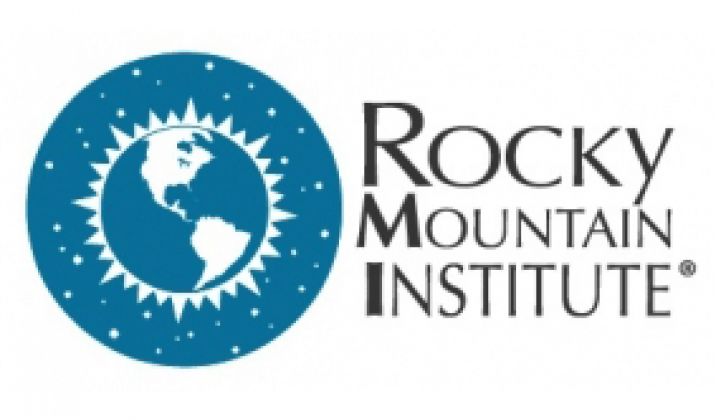Greentech Media’s recent post, "Solar’s Net Metering Under Attack," illustrates the growing debate over the sustainability of policies meant to grow our renewable future. In this case, net energy metering (NEM) was the focus of a spirited debate between Travis Bradford, founder of the Prometheus Institute for Sustainable Development, and Westinghouse Solar CEO, Barry Cinnamon, at the GTM Solar Summit in Phoenix, AZ last week.
At Rocky Mountain Institute, we agree that these issues are critical as the market for distributed renewables continues to grow, as we expect it will -- and believe it should. The bottom line: Cinnamon and Bradford are both right. And on least one point, they agree: Net metering is only a symptom of a much deeper challenge.
The U.S. electricity system is changing (and a customer becoming a power generator is only one example). Our 21st-century technology is colliding with institutional structures that have remained relatively unchanged since the 20th century. In fact, both Cinnamon and Bradford identified the real issues at play: taking a renewed look at the costs and benefits of distributed generation, the fair allocation of these costs and benefits, and rethinking the underlying rate structures and business models that pit utilities against the growing demand for clean, green, distributed generation.
Both sides of this argument would benefit by starting to collaborate to design the electrical system of the future. This is likely to be the only way to reach a shared understanding and mechanisms for identifying real costs and values of distributed resources and design effective market-based mechanisms for sharing them.
Several key points must be considered in this debate. Currently, full retail net metering is an extremely effective mechanism to promote solar adoption and drive near-term scale and cost reduction in the PV industry. However, as penetration rates grow and customer behaviors change in the coming years, NEM is simply insufficient. While some customers may not be paying their fair share for services they receive from the grid, others may not be receiving the value of the power they’re supplying. As a first step, it's time to start rethinking how we recognize, calculate and allocate real costs and value in our electricity system.
To engender a cost-effective, reliable and affordable system, neither side should sweep the other's perceptions of the costs or benefits under the rug.
The growth of distributed generation represents a fundamental shift in the formerly one-way power system from both a technical and institutional perspective. To make optimal investments and reduce total system costs, we must recognize the interaction with the larger system: the grid. Although the total amount of energy demanded from the grid is smaller through efficiency and on-site renewable generation, the solar customer’s demand profile could change substantially. On smaller timescales, such as hours, day and weeks, the amount of grid power that must be imported or exported could fluctuate considerably. In fact, a solar customer’s peak demand on the grid could be when he or she is exporting power.
It’s critical to create complementary signals and incentives for customers to be able to respond to system needs and accrue the value they could bring. Without the right signals, this may also have unintended negative consequences for the development of other distributed grid technologies, such as advanced demand response technologies or distributed storage provided by electric vehicles.
These are tough problems, and we don’t pretend to have all of the answers. To start to tackle these and other issues standing between our present reality and the potential for our electricity system, RMI is working with diverse partners to reevaluate the regulatory construct to most effectively align utility and societal goals and incentives, and harmonize business models of utilities and distributed resource developers to support the long-term sustained growth of renewable industries through an initiative dubbed the Electricity Innovation Lab launching early this summer.
***
Ned Harvey is the chief operating officer and vice president of finance at RMI. In this role, he drives institute-wide improvement in internal and external processes and aligns those processes to enhance RMI’s mission effectiveness.
Virginia Lacy is a senior consultant with RMI's electricity practice. At RMI, Virginia consults with electric utilities, corporations and governments in the development of integrated energy strategies that drive competitive advantage through a portfolio of energy efficiency and renewable energy sources. She specializes in electricity supply issues, especially variable renewable energy sources and their integration into the grid.



